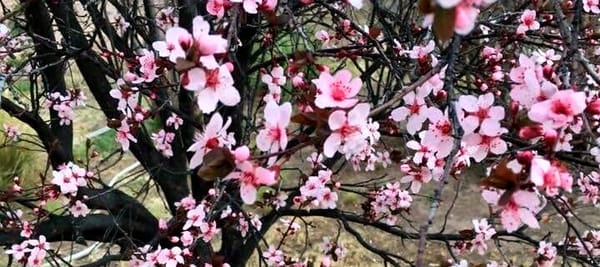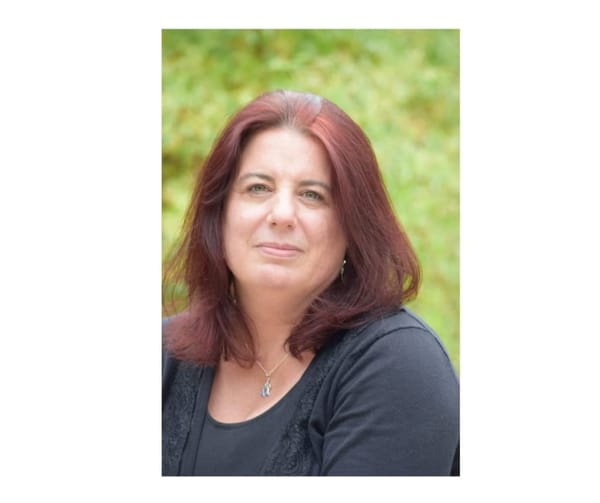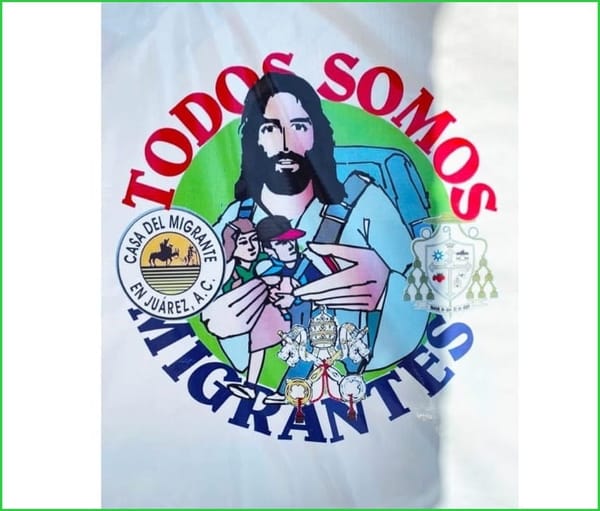Basque Country - Spain Discovering a New Mexico Connection and a 500-Year-Old Agreement With the Jews
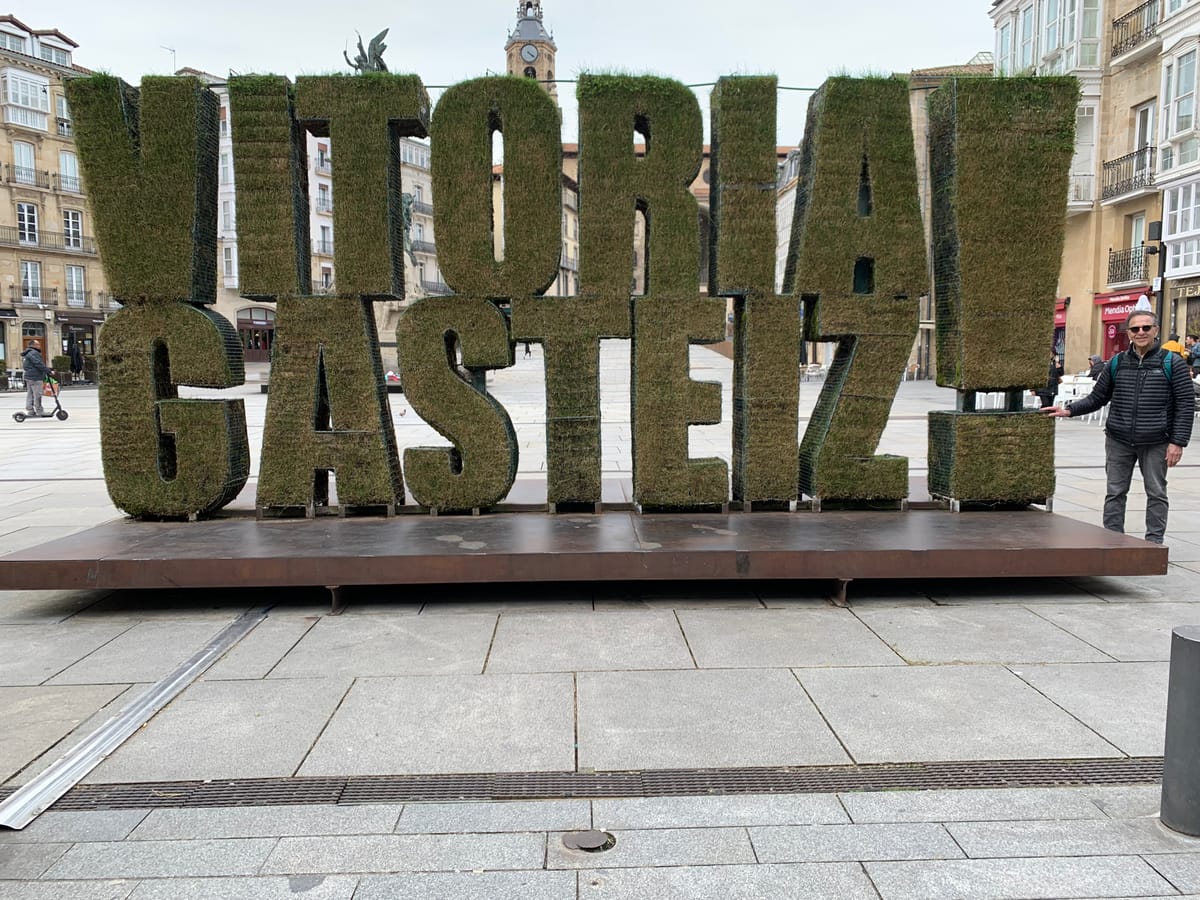
by Carl Montoya
As a native-born New Mexican, my family history took an unexpected turn when I decided to study Spanish, my parents’ first language. Fueled by a lifelong desire to learn the language my parents did not speak at home, the pandemic presented me with the perfect opportunity. I was fortunate to locate an instructor in Vitoria, Spain who agreed to conduct weekly classes in conversational Spanish via Skype. Little did I know Vitoria would not only share a historical connection to New Mexico but also spark questions about my possible genealogical and crypto-Jewish roots.
Vitoria is a charming city nestled in the verdant mountains of northern Spain with a population of 250,000. Despite being the capital of both Basque Country and Álava Province, it is overshadowed by its more popular Basque neighbors, San Sebastian with its stunning beaches, and Bilbao with its renowned Guggenheim Museum. However, for me, with my amateur genealogist and history buff hat on, Vitoria held a special allure. A surprising 18% Basque ancestry revealed in my Family Tree DNA test results fueled this curiosity. The results were especially puzzling because my family history included no stories or documentation of a Basque connection. Another surprise was when I searched the origin of my family name and internet search results indicated the Montoya surname originated in Álava Province.
Since my family history includes various crypto-Jewish traditions, I then became curious about Vitoria's Jewish past. An initial internet search yielded little evidence of a significant Jewish presence in Basque Country. Furthermore, no active Jewish community seemed to exist in the entire region. However, a glimmer of hope emerged when I found a brief 1952 New York Times (NYT) article mentioning an historic agreement between Vitoria and the Jews. The article nudged me to delve deeper into Vitoria's history by exploring local publications. My efforts paid off. I found an article in the local El Correo newspaper archives titled, "El Vitoriano que Conquistó el Norte de México,” by Francisco Góngora. Another article by Góngora titled "La Aljama de Vitoria, Una Historia de Persecución y Dignidad” also caught my eye.
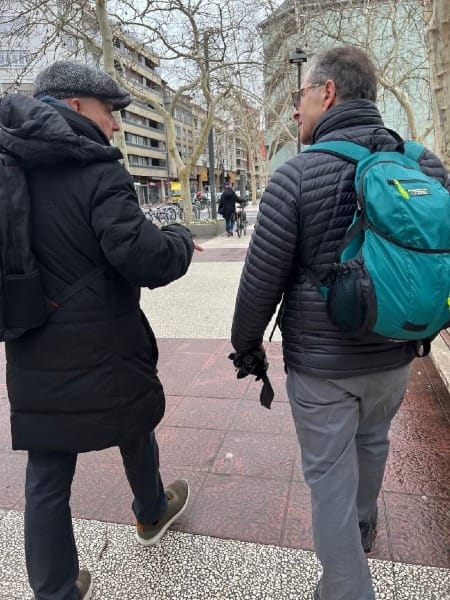
Vitoria’s Connection to New Mexico
The Vitoria native in Góngora’s article was Cristóbal de Oñate, born in 1505 to a noble family. The family name resonates with New Mexicans, as he was the father of Juan de Oñate, who led the establishment of the New Mexico colony in 1598. While the Oñate family had long been settled in Vitoria, their roots trace back to the nearby Basque province of Gipuzkoa in the village of Oñate. Cristóbal's father was Juan Pérez de Oñate and his mother, Osana González. The article detailed how Cristóbal left Vitoria at the age of 19 to work as an assistant to the Royal Accountant in New Spain (Mexico). He later enlisted in the army, where his courage as a soldier shone brightly, as related by Góngora.
Cristóbal de Oñate soon gained recognition from his superiors in New Spain when he founded Guadalajara in 1531. Later on, in 1541 he was placed in charge of the defense of Guadalajara in the absence of the governor, Francisco Vásquez de Coronado, who was exploring the “la Nueva Méjico” region with his soldiers. During this period, Guadalajara was in a precarious position as the Mixtón War (1540-1542) had commenced, a war which then grew into the Chichimeca War that was waged between the Chicimeca Confederation and the Spanish Empire and continued from 1550 to 1590. The Chichimeca nations fought against the Spanish oppressors for their harsh treatment, the enslavement of the population to work in the silver mines, and the imposition of Christianity. Capitalizing on Coronado’s absence in 1541, a large force of Chichimeca warriors launched a surprise attack on the city. Oñate’s defensive tactics and strategic use of artillery proved crucial in enabling Guadalajara’s 85 defenders and their families, and native allies, to successfully repel the attackers and safeguard the city until reinforcements arrived.
In 1548, Cristóbal was among the four founders of Zacatecas, where silver was discovered. Three of the founders were Basque, including Juan de Tolosa and Diego de Ibarra, together with Cristobal. Although the fourth founder, Baltasar Temiño de Bañuelos, was not Basque, he had married into the Zaldivar and Oñate families. Cristóbal went on to establish thirteen silver mines in Zacatecas and soon amassed considerable wealth. His son, Juan, who was born in Zacatecas, later exploited this fortune to secure permission from the Viceroy to establish the New Mexico colony.
Relying on family inter-connections to support their business ventures was a typical Basque custom. And their unique Basque language, Euskara, completely incomprehensible to fellow Spaniards, bound the Basques together. Another prominent Basque family, the Zaldivar family from Vitoria, intermarried with the Tolosa and Oñate families. The Zaldivar sons, Vicente and Juan, would later join their uncle, Juan de Oñate, in the New Mexico expedition. Although there was no apparent family connection with the Oñates, Asensio Archuleta, a fellow Basque, was also a member of the New Mexico expedition.
Juan de Oñate recruited many of the settlers for New Mexico from Zacatecas and nearby areas where several Basque families resided. This may explain why the presence of Basque DNA is a frequent topic on New Mexico genealogy forums. Like me, many grapple with the question of origin.
Although no Jewish roots of Juan de Oñate’s paternal Basque side have yet to be uncovered, Oñate’s Jewish-Converso ancestry on his maternal side has been documented and may lead to further clues for discovering Jewish ancestry among Basque Country families. Jose Antonio Esquibel, genealogical researcher, historian, and author, notes that Oñate’s mother, Doña Catalina de Salazar y de la Cadena, was a woman of high social standing and nobility and had an impressive Jewish-converso lineage through her mother (Oñate’s grandmother), Doña Catalina de la Cadena y Maluenda.
The grandmother’s paternal lineage can be traced to the 1300s in the city of Burgos where the prominent Maluenda and Ha-Levi Jewish-converso families resided. The cities of Vitoria in the Basque Country and Burgos, situated 63 miles apart, appear to be logical areas for further research. Both the Basque and Jewish cultures tend to foster close family relationships and these connections may offer a potential link to possible New Mexico Basque and Jewish ancestors in this northern region of Spain.
(Esquibel, José Antonio. "New Light on the Jewish-converso Ancestry of Don Juan de Oñate: A Research Note." Colonial Latin American Historical Review 7, 2 (1998))
Uncovering Vitoria's Jewish Past
Unlike the rest of Basque Country, during medieval times Vitoria had a thriving Jewish community of merchants, traders, craftspeople, and doctors. The city attracted many Jews due to its strategic location along trade routes to France, Castile, and Navarre, and grew in importance as a major commercial center.
Vitoria also boasted of having the most important Aljama in northern Spain. An Aljama was a self-governing body that managed the Jewish community, handling civil, criminal, tax, and other legal matters. It also served as a crucial bridge between the Jewish and Christian communities. At the time of the expulsion, the Jewish population constituted a significant portion of Vitoria, estimated to be between six and eight percent of the town, or about 150 families.
Vitoria’s Historic 500-Year-Old Agreement with the Jews
The aforementioned NYT article on Vitoria and the Jews referred to the nearly 500-year-old agreement as "one of the world's oldest." When Spain expelled the Jews in 1492, Vitoria's departing Jews signed an agreement with the city to preserve their cemetery. Nearly five centuries later, the expanding city wanted to develop the cemetery land, now prominently located in the city center. The long neglected cemetery was devoid of gravestones that had disappeared with the passage of time, and it resembled an abandoned park area. Mindful of its agreement, city officials reached out to the Jewish community in nearby Bayonne, on the French side of the Pyrenees Mountains, where many descendants of Vitoria's Jewish exiles had settled. Surprised by the city's recognition of the centuries-old agreement, the Jewish community granted permission for the development of the cemetery land.
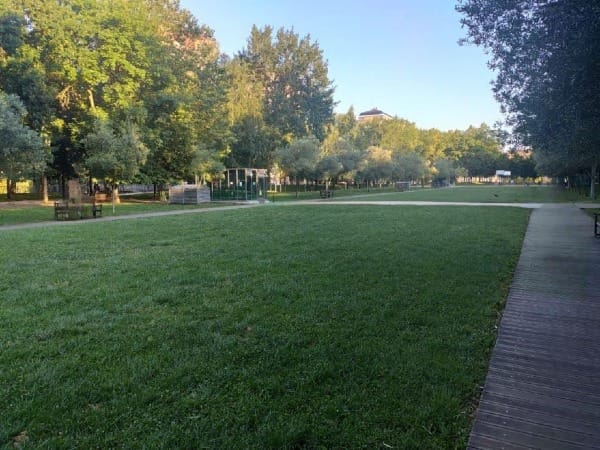
The historic 1492 agreement was not a coincidence. Eight years earlier Christian doctors had fled Vitoria during an outbreak of the bubonic plague. They abandoned their sick and dying patients and, in desperation, city officials implored the Jewish doctors to intervene. They readily agreed. When the expulsion came, vivid memories remained of the Jewish doctors’ courage and compassion in saving the many lives of Vitoria’s citizens during the plague. The city pledged to the departing Jews that their ancient cemetery, the Judiz Mendi (Basque for "Jewish Hill"), would never be "touched, wounded, or tilled." The commitment was sworn to by Juan Martínez de Olave, the town attorney, on June 27, 1492.
In 1952, Vitoria decided not to develop the cemetery area and, instead, honor its pledge to the Jews. The city converted the sacred space into a park and gardens named Parque de Judimendi. Prior to the construction of the park, workers carefully collected and reburied any uncovered bones into a common grave. Four representatives from the Bayonne Jewish community, dressed in black, gathered with members of the city council for one final time at the old cemetery. In a solemn ceremony, the Jews chanted the traditional Kaddish prayer in the ancient Sephardic melody of their ancestors.
At the park's center now stands a stone monolith inscribed with both the Star of David, and words in Spanish commemorating Vitoria's unique agreement with the Jews.
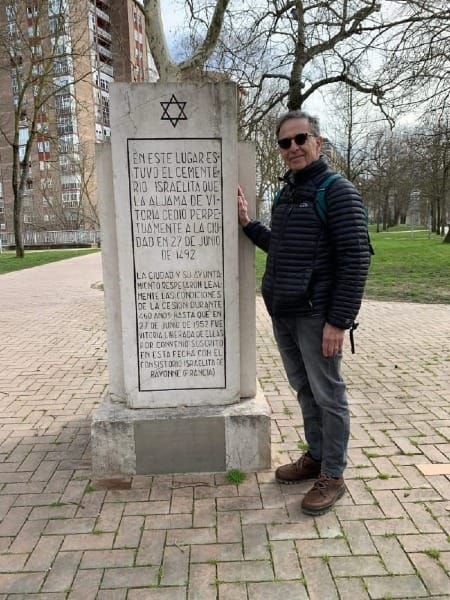
In 2004, an additional monument was unveiled by Israeli artist Yaël Artsi-Moyal. The artwork, titled “Coexistence," consists of eight large concrete slabs arranged like the pages of a book. It serves as a symbol of peaceful coexistence and cultural reunion. The inscription, in Spanish, Basque, and Hebrew, quotes the famous lines from Isaiah about transforming "swords into plowshares.”
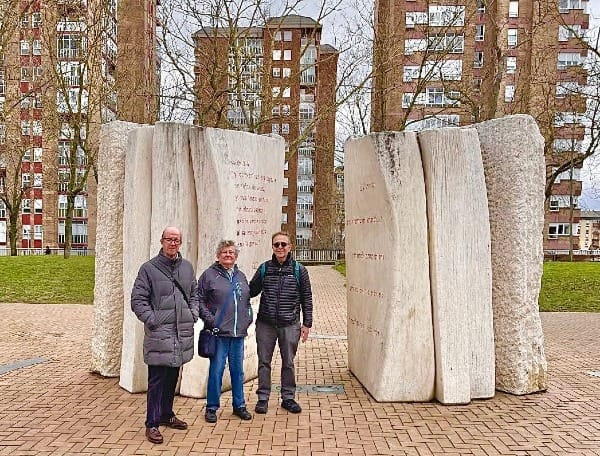
The Parque de Judimendi forever preserves the memory and contributions of Vitoria's long-gone Jewish community. May their memory be a blessing.
Epilogue
With the pandemic behind us and travel on the rebound, my wife and I finally made it to Vitoria in March 2024. After nearly three years of studying Spanish with Itziar, and wanting to experience firsthand Vitoria’s history, a visit to this intriguing city was overdue. The trip surpassed all my expectations. I connected with Vitoria's historian, Francisco Góngora, a retired editor of El Correo and the author of the articles I had read. His warm hospitality was evident as he organized a gathering of his fellow historians, who became my enthusiastic guides. They led me on an insightful walking tour through Vitoria's medieval core, the Casco Viejo (Old City), the Judería (Jewish quarter), and, of course, the Parque de Judimendi. Francisco also provided me with a signed copy of his book, "Historias Perdidas de Álava” which includes accounts of prominent people from Álava and their achievements.
Vitoria has a rich history to explore. It has preserved its medieval archives dating back to its founding in 1181 CE. Examining these records will require a specialist to decipher the medieval documents. I also yearn for deeper conversations with Góngora and his historian colleagues, all so passionate and knowledgeable about their city's past.
With many sources to research and interviews to conduct, I have compelling reasons to return to Vitoria. There are many possibilities for uncovering genealogical ties and crypto-Jewish connections to my New Mexico ancestors. And on a personal level, opportunities to practice my Spanish.
Perhaps my fellow New Mexicans will also discover their connections to this unique corner of Basque Country.
Carl Montoya is a retired Federal government administrator with the U.S. Department of Health and Human Services in Washington DC. He also served with the U.S. Department of State at the American Embassy in London. Carl resides in Philadelphia with his wife, Donna, and their passion is traveling the USA and the world. He is a Board Member of Mikveh Israel, a Spanish-Portuguese Synagogue of the American Revolution founded in 1740.
To see more articles click here, or the HOME button at the top.
Community Supporters of the NM Jewish Journal include these advertisers:
Jewish Community Foundation of New Mexico
Congregation Albert
Jewish Community Center of Greater Albuquerque
The Institute for Tolerance Studies
Shabbat with Friends: Recapturing Together the Joy of Shabbat
Congregation B'nai Israel
Jewish Federation of El Paso and Las Cruces
Temple Beth Shalom
Single Event Announcement advertisers:
Academy of Jewish Learning at Congregation B'nai Israel
New Mexico Jewish Historical Society
Policy Statement Acceptance of advertisements does not constitute an endorsement of the advertisers’ products, services or opinions. Likewise, while an advertiser or community supporter's ad may indicate their support for the publication's mission, that does not constitute their endorsement of the publication's content.
Copyright © 2024-2025 New Mexico Jewish Journal LLC. All rights reserved.

